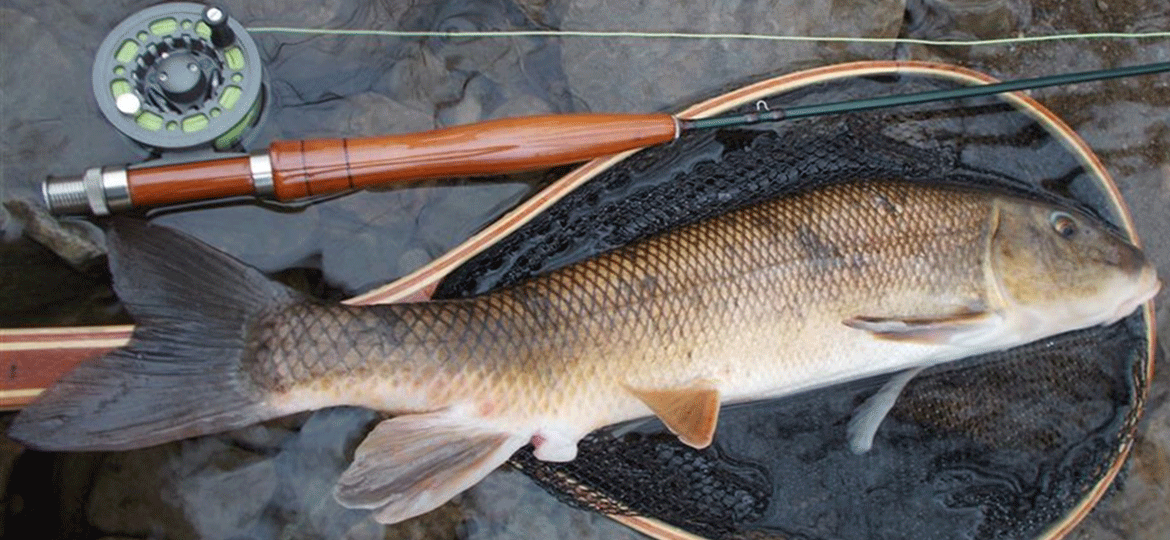
The white sucker (Catostomus commersoni) is widely distributed from the Arctic to Alabama and found widely distributed throughout Vermont lakes and rivers. They are also found throughout the Atlantic, Great Lakes, and Mississippi west to New Mexico. White suckers can live up to 17 years and reach lengths up to 25 inches.
White suckers have an elongated, cylindrical body with a large head and a “sucker” shaped mouth with fleshy on the underside of the head.
Habitat
Habitat for white suckers range widely from warm shallow ponds to deep large lakes to small cold rivers to large, low gradient rivers. This species stays close to the bottom and can tolerate most habitat types from silt and mud to cobble and gravel.
White sucker are relatively tolerant to certain forms of habitat degradation such as turbidity, siltation, as well as several pollutants. They are also moderately resistant to low pH, but have been eliminated in some severely acidified lakes in Canada.
Reproduction
White sucker spawn from April to June as water temperatures reach 50°F. Spawning sites are generally in rocky shallows in the moderate currents of rivers and streams or wind-swept lake shores. Populations in lakes make spawning runs up rivers.
Two to ten male suckers and one female can spawn up to 40 times per hour and 36,000-139,000 adhesive eggs are later deposited by the female. Eggs will incubate in gravel for 8 to14 days before hatching. No nest is built nor is parental care given. Depending upon location, maturity can occur at age three to eight.
Diet
Young suckers have a terminal mouth (mouth on the bottom of the head) which they use to feed on plankton small invertebrates. Once they reach about an inch in length, their mouth begins to move into the subterminal position and the fish becomes a bottom feeder. As they age, their diet becomes more varied, feeding on mollusks, aquatic insect larvae (mostly midges), algae, crustaceans, and decayed organic materials when other food sources are scarce.
Management
This species does not have a minimum length or daily limit. Work conducted by Vermont Fish & Wildlife staff to help conserve these populations includes, but is not limited to:
- Improving aquatic organism passage.
- Protecting and restoring fish habitat.
- Monitoring local fish communities.
- Engaging in regulatory proceedings, providing direct input to protect aquatic habitats on individual development projects through Act 250, Section 248, Stream Alteration, Dam Safety, hydroelectric relicensing, water withdrawals, etc.
Status
This species is not listed as threatened, endangered and is not a species of greatest conservation need in Vermont.
Fun Facts
-
White suckers are also commonly referred to as common sucker, sucker, eastern sucker, black sucker, blackfin sucker, grey sucker, mullet, black mullet, carp, meunier noir
-
The Abenaki word for sucker fish is “kikômkwa,” meaning “the garden fish.” White suckers swim upstream for spawning in the spring at the same time as gardens are being prepared. Traditionally and still today, it is part of the Abenaki culture to insert one or more fish or parts of fish “about the size of your open hand” 8 to 18 inches deep in a mound of soil when planting a garden to help provide nutrients for growing plants.
-
It is said that in the spring, their flesh is sweet and delicious but becomes flaccid and muddy tasting later in the year.
-
Some have condemned this fish as an “unwanted competitor with game species” or “trash fish.” This is not true. White suckers are a valuable native member of Vermont’s fish community.
